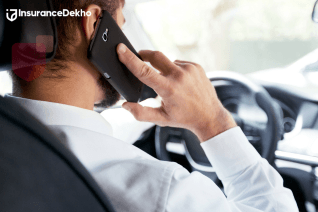How To Drive Safely At Night?
It's critical that we follow a few simple guidelines to ensure that our nighttime journey is both pleasurable and safe.
Table of Contents
Night driving necessitates significantly more vigilance than daytime driving. Roads are undeniably more attractive at night than they are during the day, and they are also far less crowded. They are, however, unquestionably more harmful. Visibility is, of course, the primary distinction between night and day driving. After nightfall, human vision is hampered not just by poor color contrast, but also by the glare of incoming automobiles' headlights. As a result, it's critical that we follow a few simple guidelines to ensure that our nighttime journey is both pleasurable and safe.

Some Tips For Driving Safely At Night?
-
Examine the Lights
Check and double-check all of the car's lights to ensure they are in functioning order. Headlights, brake lights, indicators, fog lights, and other lights should not be fused or dusty because this will reduce the driver's vision. It would also fail to inform other cars in the area that you were present.
-
Windscreens and Windows should be clean
It is critical to keep the windows clean in order for the motorist to view the road properly. To keep the windscreen clean, make sure the windscreen washer is always full and the wipers are in great operating order.
-
Mirrors in back
Rearview mirrors with day and night settings are now standard equipment on all new automobiles. These options allow you to adjust the angle of the reflecting surface, reducing glare from vehicles behind you. The ORVMs (Outside Rear-View Mirror/Wing Mirror) should also be adjusted so that the driver is not blinded by high beams of headlights.
-
Avoid Speeding
While the significance of driving slowly at night cannot be overstated, it is especially important on Indian streets because of the presence of bikes and pedestrians, who are difficult to notice at night. Also, to avoid any mishaps in the event of panic stops, keep a safe gap between your car and the one ahead of you.
-
Know how to use High Beams and Dippers
Avoid blinding other vehicles by driving with high brightness in congested locations. However, in the case of a clear road, and especially if the road lights are faint, it is recommended to utilize a high beam. Even if the incoming motorist does not, it is suggested to switch to low beam as soon as you detect a car approaching. Even if others aren't, it's not a bad idea to be nice. If approaching cars do not drop their beams, do not gaze into them since this may induce blurring or partial blindness, even after the vehicle has passed. Instead, concentrate on the white line on the road to keep yourself on the right side of the road.
-
Discover how to use the Flash Dipper
You must also understand the value of flashing a dipper in addition to using the horn. We've become accustomed to hearing honking and often dismiss it. It's even more necessary to be extremely cautious since you can be surrounded by intoxicated drivers. Yes, don't dazzle oncoming vehicles by flashing your headlights all the time; instead, just use your dipper when overtaking, turning, or crossing a street.
Take Away
Even if you follow the laws of the road, tragic occurrences such as accidents occur, some of which are your responsibility and others which are the fault of others. A third party that was harmed as a result of the occurrence may file a claim against you for their losses. This may be a significant financial setback for you. When driving at night, we may decrease accidents by taking extra measures, being vigilant, and being sober.
Also read - Is Your Newly Bought Car Safe From Getting Stolen?
10 safety tips while driving your car in winter
Disclaimer: This article is issued in the general public interest and meant for general information purposes only. Readers are advised not to rely on the contents of the article as conclusive in nature and should research further or consult an expert in this regard.














































